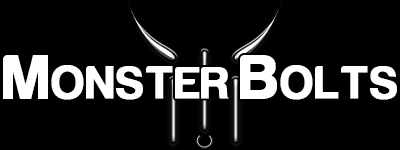Choosing between coarse (UNC), fine (UNF), and metric threads isn’t just a matter of preference — it affects strength, ease of assembly, vibration resistance, and interchangeability. This guide breaks down the key differences, provides a quick conversion chart, and explains when to use each thread system.
Thread Systems at a Glance
| System | Pitch | Common Sizes | Best For |
|---|---|---|---|
| UNC (Unified Coarse) | Fewer threads per inch (TPI), deeper thread form | #4-40, #6-32, #8-32, 1/4-20, 5/16-18, 3/8-16 | General assembly, wood, soft metals, quick installation |
| UNF (Unified Fine) | More threads per inch (TPI), shallower form | #10-32, 1/4-28, 5/16-24, 3/8-24 | Automotive, aerospace, precision assemblies, vibration resistance |
| Metric (ISO) | Pitch in mm (distance between threads), e.g. M6 × 1.0 | M3 × 0.5, M4 × 0.7, M6 × 1.0, M8 × 1.25 | International standardization, machinery, engineering |
UNC vs UNF: Coarse vs Fine Threads
UNC threads are easier to assemble and more tolerant of dirty or damaged threads due to their coarser pitch and deeper profile. They’re common in general construction, wood, and softer metals.
UNF threads offer better vibration resistance and greater tensile stress area for the same nominal diameter, making them ideal for automotive, aerospace, and precision machinery where fasteners are torqued accurately and reused.
Metric Threads: The Global Standard
Metric threads use the ISO system, where pitch is defined in millimeters (e.g., M6 × 1.0). Coarse pitch is the default unless otherwise specified. Fine pitches exist (e.g., M10 × 1.25 vs M10 × 1.5) and are used where finer adjustment or more thread engagement is needed in thin materials.
Quick Conversion Chart
| Inch (UNC/UNF) | Threads Per Inch (TPI) | Closest Metric Size | Metric Pitch (mm) |
|---|---|---|---|
| #10-24 (UNC) | 24 | M5 | 0.8 |
| 1/4-20 (UNC) | 20 | M6 | 1.0 |
| 5/16-18 (UNC) | 18 | M8 | 1.25 |
| 3/8-16 (UNC) | 16 | M10 | 1.5 |
Note: This chart shows closest nominal equivalents, not exact interchangeability.
Fit Classes & Tolerances
Thread fit determines how tightly the male and female threads mate:
- UNC / UNF: Common fit classes are 1A/1B (loose), 2A/2B (general), and 3A/3B (tight, precision).
- Metric: Uses tolerance classes like 6g/6H (general), 4g6g/6H (close), or 6e/6H (looser external).
For most industrial and construction applications, 2A/2B or 6g/6H fits are typical.
When to Use Each System
- UNC: Quick assembly, soft materials, general purpose fastening, wood, construction.
- UNF: Automotive, aerospace, precision machinery, vibration resistance, limited space.
- Metric: International compatibility, engineering applications, standardized machinery.
FAQ: UNC vs. UNF vs. Metric Threads
Can I substitute a metric bolt for a UNC or UNF?
No — while some sizes are similar, threads are not interchangeable. Use the correct system for the mating parts.
Which thread type is strongest?
UNF typically has a larger tensile stress area for a given diameter, but installation and application conditions matter more than raw strength.
Is metric taking over UNC/UNF?
Globally, yes — metric is the international standard. However, UNC/UNF remains dominant in U.S. legacy equipment and construction.
Why are coarse threads better for soft materials?
Coarse threads have deeper profiles, reducing the chance of stripping in wood, plastic, or aluminum.
What’s the difference between pitch and TPI?
Pitch is the distance between threads (metric). TPI (threads per inch) counts how many threads are in one inch (inch systems).
